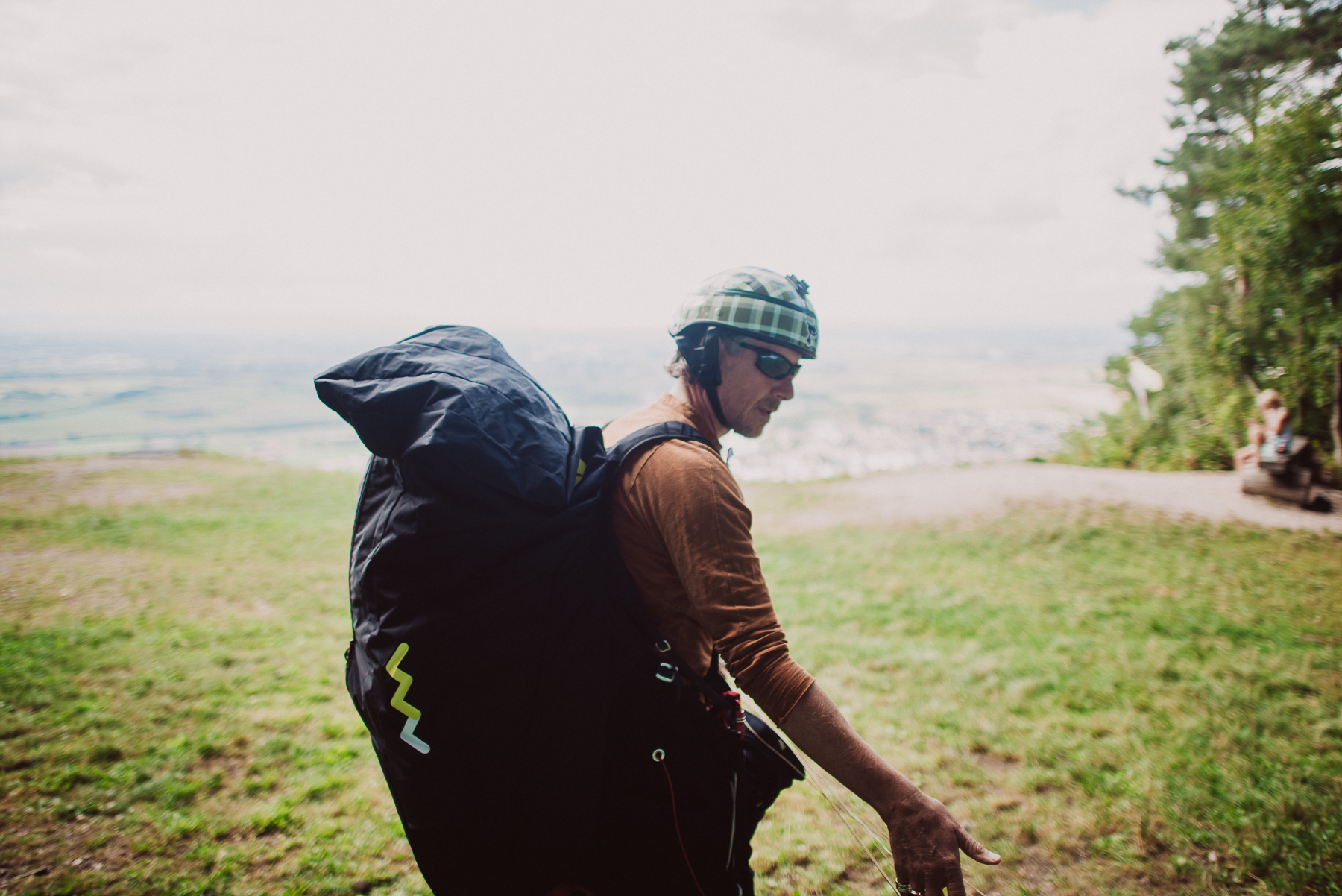As a child Rolf Rinklin simply wanted to fly away when it got too dicey. Today, he flies whenever he wants to feel free as a bird—and when the wind’s blowing from the west. A westerly breeze means ideal conditions at the “Schriesheimer Ölberg,” making a paragliding flight from the top of the mountain a trip into another world.
Even the way up is a ritual: Overcoming an altitude difference of hundreds of exhausting metres through the forest, first walking on paths winding through the vineyard of Schriesheim, then on narrow trails overgrown with roots up to the ruin of Schauenburg Castle—where Rolf Rinklin drops his rucksack weighing more than 10 kilogrammes, catches his breath and examines the clouds.
“When I walk up here,” the graphic designer from Mannheim says, “I am happy and have only one concern: that the wind is right.” And the wind being right for paragliders means the clouds come sailing over the Rhine valley like white ships towards the Badische Bergstraße area from the Palatinate Forest, i.e. from the west. Rolf Rinklin now continues his way up to the mountain top through the forest as fast as he can—until at the end of the path a broad clearing opens up like a window to the sun: This is the take-off site of the hang-glider and paraglider pilots of the Bergstraße district, the “Bergsträßler Drachen- und Gleitschirmflieger,” with an altitude of 270 metres above Schriesheim.

40 years earlier, in 1977, Charlie Jöst from Schriesheim roamed the forest in search of a legendary gliding airfield—and found the forgotten place where, back in the 1930s, sailplanes were catapulted into the sky with the help of a rubber rope. In order to start hang-gliding the drummer of the krautrock band Tritonus at that time just had to cut down some bushes, take a run-up, spurt over the edge of the slope—and fly!

At the exact spot where Jöst touched down safely some minutes later, on a meadow in the vineyard on the boundaries of the town bordering on Dossenheim, today in good weather there are dozens of paragliders—checking their smart phones. Once again, all hell has broken loose in the WhatsApp group “Schrieße nuff schlappe” (local vernacular meaning “toiling up the Schriesheim mountain”) with everyone hoping that they don’t have to toil up there—but rather get a lift up by bus. And right now, the club’s good old VW bus comes rattling round the corner to get the next group on the bumpy ride up to Ölberg mountain. If you don’t find a seat in the bus and don’t want to wait for the next ride, you have to walk—just like Rolf Rinklin today, who is now ready to take off.

He spreads out the paraglider on a big green mat. The numerous thin tethers are sorted, the GPS and flight instruments checked, the helmet donned, and the glasses reflect the clouds in the sky. Waiting for the right moment; it is now. Time and again his gaze wanders to the wind vanes at the edge of the forest. Dead calm. Nothing happens. But all of a sudden, it starts to rustle in the trees above. The west wind starts to become entangled in the U-shaped structure of the Ölberg—a warm wind serving as a thermal lift soars uphill. Now everything happens very quickly. Rolf Rinklin starts running backwards, with a short hitch the paraglider unfurls above him, then he turns his body towards the ramp and runs … and runs … and flies.
















